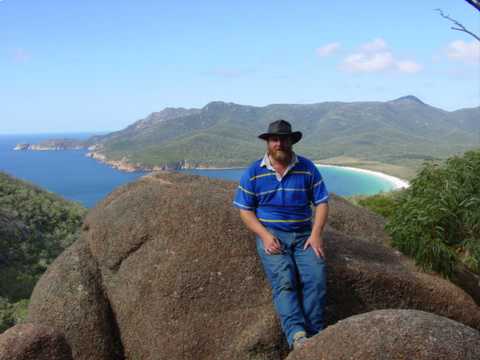I have just finished reading this book. It is a look at the history of place, a story that needed to be told about the history of what happened on the far south coast after the arrival of Europeans. It tells the history as it was - not as it was perceived. It places the history of the area into 4 parts: Dispossession, Forgetting, Abandonment, Confrontation.
 The impact is enormous. It tells, using a lot of source material and oral histories, of the dispossession of the aboriginals from there land. It was a movement both open and by stealth. Then it moves into the realm of the way in which the whites conveniently "forgot" about the way in which they tried to wipe out the real locals. The interesting thing about the book is the way it deals with both sides. Part 3 looks at the how the non-Aboriginals felt about their circumstance - they largely had a sense of abandonment. They were at the frontier - a long way form what they saw as civilisation. There was almost no moral/ethical well being.
The impact is enormous. It tells, using a lot of source material and oral histories, of the dispossession of the aboriginals from there land. It was a movement both open and by stealth. Then it moves into the realm of the way in which the whites conveniently "forgot" about the way in which they tried to wipe out the real locals. The interesting thing about the book is the way it deals with both sides. Part 3 looks at the how the non-Aboriginals felt about their circumstance - they largely had a sense of abandonment. They were at the frontier - a long way form what they saw as civilisation. There was almost no moral/ethical well being. It wasn't till 30 years after settlement that there was any Christian Church that looked after the people.
And on some occasions the church didn't help the Aboriginal people.
And also, not every one was against the traditional locals. Chapter 6 is the story of Oswald Brierly, a young artist who came to the area with Ben Boyd to manage Boydtown. But he also came with paints, and pencils and made many observations. He tells the story of the locals: black and white. He has a strong empathy with the Aborigines, and often condemned the actions of the whites. "He was a pioneer of understanding rather than a pioneer of industry" (p 134)
Part 4 - Confrontation. (And it was)
Looks at the new history - the forgotten past - the real history. The pasted shaped now by the memory of what happened, about who we are (black and white). It is interesting that in 1967 Bega had the distinction of recording the 2nd highest rejection rate (voted no in the referendum for aboriginal equality). This section is challenging and very confronting as it reflects a lot about us all as a people (section 8 - "we are all one" p 162 ff). It reflects fear and discrimination, it shows heart and compassion.
Above all it showed a way forward. It tells of the move to reconciliation - of the need to be aware of and sensitive to the shame and pain of the white past.
Even though I (we) were not there does not meant that I/we can not have real regret about what happened in the past.
Even though the book is set about the south coast, it tells a story that is mostly true for all the country - there was good and bad everywhere.
It is now that we must understand and walk together. The past may be gone but the future beckons...
One amazing book - well done Mark McKenna.
Book details: Looking for Blackfellas' Point: an Australian History of Place, Mark McKenna , 9780868406442, UNSW Press, August 2002
I came across this interesting link. It is the blog site for a Sydney Uni History unit about Land, Memory and Place in History (It will probably vanish after the end of semester which will be a shame). Yep it has a new link: http://blogs.usyd.edu.au/writingplace/2007/04/the_relationship_between_place.html (as at 7/3/2008)
 The impact is enormous. It tells, using a lot of source material and oral histories, of the dispossession of the aboriginals from there land. It was a movement both open and by stealth. Then it moves into the realm of the way in which the whites conveniently "forgot" about the way in which they tried to wipe out the real locals. The interesting thing about the book is the way it deals with both sides. Part 3 looks at the how the non-Aboriginals felt about their circumstance - they largely had a sense of abandonment. They were at the frontier - a long way form what they saw as civilisation. There was almost no moral/ethical well being.
The impact is enormous. It tells, using a lot of source material and oral histories, of the dispossession of the aboriginals from there land. It was a movement both open and by stealth. Then it moves into the realm of the way in which the whites conveniently "forgot" about the way in which they tried to wipe out the real locals. The interesting thing about the book is the way it deals with both sides. Part 3 looks at the how the non-Aboriginals felt about their circumstance - they largely had a sense of abandonment. They were at the frontier - a long way form what they saw as civilisation. There was almost no moral/ethical well being. 


